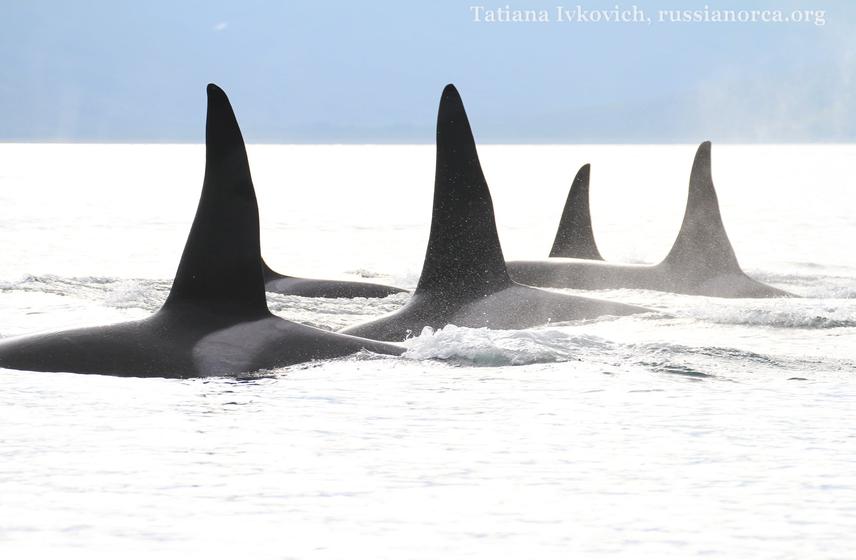Tatiana Ivkovich
Other projects
30 Apr 2014
Killer Whale (Orcinus orca) Habitat Conservation in Kamchatka and Kuril Islands
Our main objectives are to conserve killer whale populations of Eastern Kamchatka and to promote public awareness about the marine habitat degradation.
The current changes in marine habitats (such as fish stock depletion) may have a dramatic effect on killer whale female reproduction. Low female reproductive success will lead to a time-lagged population decline. Thus, current ecological processes may have a delayed but crucial effect on killer whale population abundance. We are planning to evaluate the dynamics of killer whale female reproductive success in relation to different ecological factors and to communicate with the public about the long term and delayed effects of current ecological changes on marine mammal population survival. We suppose that the reproductive success of a female may be influenced by matriline size and composition. Prey availability will play a major role in female reproductive success.

© Tatiana Ivkovich, russianorca.org
The Avacha Gulf of Kamchatka, which includes important killer whale feeding areas, is also heavily exploited by humans. Illegal fishing is widespread in Kamchatka and leads to overfishing and exhaustion of killer whale food resources. By 2006 one of the main killer whales feeding areas in Avacha Gulf (Eastern Kamchatka), an important Atka mackerel breeding ground, was exhausted due to overfishing. Such a reduction in feeding resources is expected to have a critical effect on killer whale female reproductive success, which we are planning to detect and quantify by monitoring interbirth interval, birth rates and calf mortality using photographic mark-recapture methods. The results will be widely disseminated to the scientific community and to the public. We will explain the processes that can lead to population depletion due to different ecological factors including anthropogenic influence and habitat degradation. In particular, we will focus on the specific conservation measures and concrete action plans needed to maintain a viable population of killer whales and preserve the marine habitat of the Avacha Gulf. The results of our project will play an important role in understanding killer whale female reproductive strategies and provide essential information for the conservation and management of the Kamchatka killer whale population. It will also contribute valuable information to a general understanding of the interaction between population dynamics, demography and the environment in this species.
We hope to inspire young people and Russian scientists and turn their attention to the problems of conservation planning of marine mammals and marine habitats for coming generations.